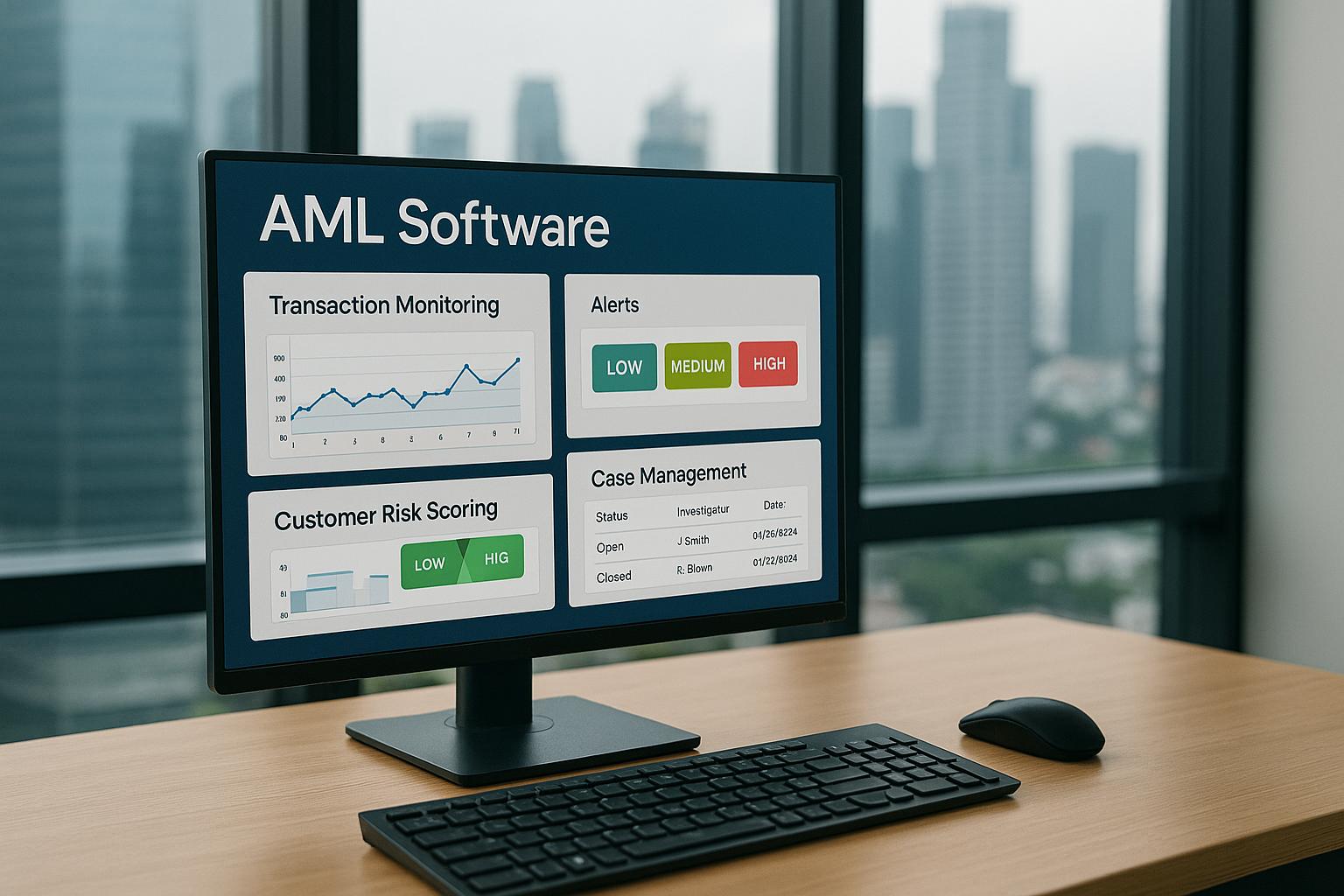Australia’s AML Challenge: Can Agentic AI Be the Game-Changer Compliance Teams Need?
.svg)
Australia’s fight against money laundering is reaching a turning point and traditional solutions are no longer enough.
As regulatory scrutiny intensifies and criminal networks grow more sophisticated, financial institutions in Australia are exploring a new frontier in compliance: Agentic AI. This blog unpacks how Agentic AI AML solutions can reshape Australia’s financial crime prevention landscape by delivering smarter, faster, and more adaptive capabilities than ever before.
The State of AML in Australia: A System Under Pressure
Over the past few years, Australia’s financial system has faced escalating risks tied to money laundering. AUSTRAC’s investigations and enforcement actions—most notably against major banks and casinos—have highlighted systemic gaps in compliance frameworks.
Institutions are struggling with high false positive rates, fragmented systems, and outdated monitoring approaches. Meanwhile, criminal syndicates are exploiting the real-time nature of instant payments, decentralised finance, and cross-border transactions. The compliance burden is rising, but traditional AML tools simply haven’t kept pace.
This growing complexity calls for a fundamental rethink of how AML is done.
What is Agentic AI and Why Should Australia Care?
Agentic AI represents a significant leap beyond traditional machine learning. Instead of being programmed for static outcomes, Agentic AI systems use autonomous “agents” that can set goals, reason through problems, and adapt their actions in real time.
In a compliance context, these AI agents don’t just monitor and flag—they act. They investigate patterns, test hypotheses, escalate alerts when needed, and collaborate with other agents to build a full picture of suspicious activity. All of this happens dynamically, without waiting for a human analyst to intervene.
This matters for Australia because our financial crime landscape isn’t static. Typologies evolve quickly—whether it’s scams exploiting the New Payments Platform (NPP), layering through online wallets, or mule networks moving funds across state and national lines. Agentic AI is built to adapt and respond as these threats emerge.

Why Traditional AML Systems Are No Longer Enough
Rules-based AML systems still dominate the compliance stack in most Australian financial institutions. But the limitations are becoming hard to ignore.
These systems rely on pre-defined thresholds and static logic. If a transaction meets certain criteria—such as amount, jurisdiction, or frequency—it triggers an alert. But criminals know how to operate beneath those thresholds, and many suspicious behaviours don’t fit neat rules. The result? Thousands of false positives, missed threats, and analyst burnout.
In contrast, an Agentic AI AML solution continuously learns from data. It identifies nuanced, cross-dimensional risks—like slight variations in device access, subtle changes in account behaviour, or inconsistencies in geolocation and transaction context. These agents then prioritise and narrate alerts, enabling compliance teams to act faster and with more clarity.
For compliance leaders in Australia, this means faster response times, smarter prioritisation, and better outcomes for both detection and regulatory compliance.
Real-World Application: Laundering Through Instant Payments
To understand the power of Agentic AI, let’s look at a real-world typology that’s increasingly common in Australia: laundering scam proceeds via instant payments.
Imagine a criminal syndicate operating a romance scam network. Once the funds are extracted from victims, they are layered rapidly using the NPP—transferring money in small amounts across dozens of mule accounts within minutes. This makes tracing the origin of funds incredibly difficult.
With a traditional system, these transactions may appear benign—low-value, domestic, and frequent. Nothing overtly suspicious. But with Agentic AI, multiple agents can work in tandem:
- One monitors transaction velocity across accounts.
- Another correlates geolocation and device metadata.
- A third tracks account profile changes over time.
Together, these agents detect an evolving pattern and raise a high-priority alert—complete with contextual explanation, risk assessment, and a recommended action path.
This is proactive AML in action—not reactive firefighting.
Alignment with AUSTRAC’s Vision for Smarter Compliance
Australian regulators are not standing still. AUSTRAC has repeatedly emphasised the importance of adopting advanced technology, dynamic risk assessments, and a shift from “tick-the-box” compliance to intelligent, real-time systems.
Agentic AI AML solutions fit this vision. These systems don’t just tick boxes—they help institutions meet the spirit of the law by providing robust audit trails, explainable AI decisions, and clear narratives for suspicious activity reports (SARs).
They also support ongoing customer due diligence, behavioural profiling, and scalable risk segmentation—all core components of AUSTRAC’s compliance expectations.
For financial institutions in Australia, adopting Agentic AI isn’t just smart—it’s strategic alignment with where regulation is headed.
Operational Benefits Beyond Compliance
Beyond risk detection and regulatory reporting, Agentic AI also delivers strong operational value to Australian financial institutions.
First, there’s a significant reduction in compliance costs. By cutting down on false positives and automating repetitive investigations, these systems free up analysts to focus on high-value work. This is especially important for small-to-midsize institutions and challenger banks with lean compliance teams.
Second, Agentic AI enhances the customer experience. When alerts are more accurate, institutions avoid freezing legitimate transactions or incorrectly flagging trusted customers. Trust and speed become competitive differentiators.
And third, these solutions scale. As financial institutions expand across products, regions, or customer segments, new agents can be deployed to monitor unique risks—whether it's crypto-related laundering, mule recruitment scams, or trade-based money laundering.
The Power of Collaboration: Agentic AI Meets Federated Learning
One of the most promising advances in AML technology is the fusion of Agentic AI with federated learning.
In federated learning, institutions don’t need to share sensitive customer data to benefit from collective insights. Instead, AI models are trained across decentralised environments—learning from aggregated, anonymised behaviours across the ecosystem.
When applied to Agentic AI, this means your autonomous AML agents are constantly upgrading their intelligence based on global patterns of emerging risk—while still protecting customer privacy.
For Australia, where financial crime often moves across banks, borders, and digital platforms, this model could be a game-changer. It breaks the silos that criminals exploit and helps institutions collaborate without compromising on data protection.
FinCense by Tookitaki: Australia-Ready Agentic AI AML
Tookitaki’s FinCense platform is at the forefront of this evolution. Designed to be fully compatible with AUSTRAC compliance frameworks, FinCense is an agent-driven AML platform built from the ground up for dynamic, real-time financial crime prevention.
What makes FinCense different is not just the use of AI, it’s how that AI works.
FinCense uses autonomous agents to:
- Ingest and simulate real-world money laundering scenarios.
- Adjust thresholds and rules based on local risks and regulatory priorities.
- Narrate alerts for faster SAR filing.
- Integrate with federated AML networks to surface rare or emerging typologies.
It also includes explainable AI capabilities, ensuring that every decision made by an agent can be reviewed, understood, and justified—something Australian regulators and compliance officers deeply value.

Getting Started: What Compliance Leaders Can Do Today
If you’re a risk or compliance leader in Australia, now is the time to act. Financial crime is evolving faster than ever, and regulators are watching closely.
Here are five things you can do today:
- Audit your current AML stack. Where are the bottlenecks? Where are false positives eating up resources?
- Pilot an Agentic AI system. Evaluate how it performs against traditional systems in identifying hidden risks.
- Invest in training. Equip your compliance analysts to work alongside AI—understanding its recommendations and enhancing their investigative capabilities.
- Join AML collaboration forums. Explore federated learning partnerships and AML ecosystems to tap into shared intelligence.
- Align with AUSTRAC priorities. Ensure your AML systems are future-ready in terms of explainability, scalability, and responsiveness.
Conclusion: The Time for Smarter AML Is Now
Australia’s AML landscape is at an inflection point. Criminals are innovating faster, regulation is tightening, and legacy tools are showing their limits. Agentic AI offers a compelling new path—one that’s adaptive, intelligent, and built for a fast-changing financial world.
With solutions like Tookitaki’s FinCense, financial institutions can move from reactive compliance to proactive protection—safeguarding customers, preserving trust, and staying ahead of the curve.
The future of AML in Australia is agentic. Are you ready to make the leap?
Experience the most intelligent AML and fraud prevention platform
Experience the most intelligent AML and fraud prevention platform
Experience the most intelligent AML and fraud prevention platform
Top AML Scenarios in ASEAN

The Role of AML Software in Compliance

The Role of AML Software in Compliance









